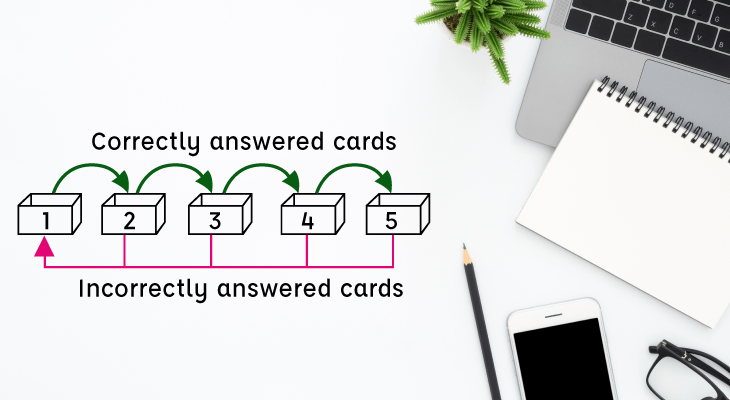6 Study Techniques That Put the Smart in “Study Smart”
Finding it hard to remember what you studied? Maybe you’re not doing it right. Here are 6 smart study techniques you should try out.
Published 12 Jan 2021

The dreaded exam season is almost upon us. Are you ready? Or are you still trying to find the motivation to study?
If you’ve ever found yourself struggling to maintain a schedule and have a productive study session, do not panic just yet. It may feel overwhelming but if you play your cards right, you’ll be ready for your exams in no time.
Take a breather and check out these 6 smart study and time management techniques that can bring your “A” game.
#1. The Pomodoro technique: Balancing focus with breaks

Named after the tomato-shaped timer, the Pomodoro technique is a system that helps you manage your time better by removing distractions and improving your attention span.
The technique is simple. Identify a task you need to do. Set a 25-minute timer and get started on the task, focusing all your energy and concentration towards it. When the time is up, take a short 5-minute break. Repeat this process, allocating a longer 15-30 minute break after every 4 cycles.
The Pomodoro technique is highly effective because it helps to train your brain to focus and eliminate distractions, keeping you accountable for your time and tasks.
The best thing about this technique is you can easily adjust the time to suit your personal needs. If the task requires more than 25 minutes, go for longer variations. If 25 minutes is too long, make it shorter.
#2. The Feynman method: “Explain like I’m five”

We often trick ourselves into thinking that we understand something when in reality, we merely memorised vocabulary and jargon. The Feynman method helps you break down complicated concepts and ideas, allowing for deeper understanding.
The idea behind it is simple — write down the concept on a piece of paper and pretend you’re teaching it to a 12-year-old. Use mind maps and graphs for visual aids and break down complicated concepts into digestible bits. By teaching it to a hypothetical child, you will be forced to abandon the big words for easy-to-understand explanations.
After that, review any missing information. You might notice some parts where you couldn’t explain properly, either because you had to use big words or you just didn’t understand it enough to explain to a child. Revisit the material and go through these sections until you can explain it in simple words.
Finally, gather all the notes you made. Review them to make sure they are correct and edit as you see fit. Now, you have a handwritten note that even a child can understand.

#3. The KWL chart: Study with purpose

An acronym that stands for know (K), want-to-know (W) and learned (L), the KWL chart is a method to help you read and learn with a purpose.
Here’s how it works. Create a table with each alphabet acting as a column:
- Column K (know): Before you start your study session, write everything you know about the topic under this column.
- Column W (want-to-know): Note down everything you don’t know, but want to know. Make sure to include your expectations, learning objectives and any questions you may have about the topic.
- Column L (learned): Once you’ve finished studying, note down everything you’ve learnt in this column.
It’s important that you refer back to the previous columns to see if the things you recorded in Column L tallies with what you wanted to know from Column W. Are all your questions answered or are there still gaps you need to fill in?
This technique is a convenient way to keep track of your study session and provide structure. It’s also particularly great for visual learners as it synthesises all the information visually.
Apply for university with EduAdvisor
Secure scholarships and more when you apply to any of our 100+ partner universities.
Start now#4. The Seinfeld method: Don’t break the chain

This method comes from American comic, Jerry Seinfeld, who claimed that his success as a comedian comes from constantly writing. For every day that he writes, he marks it on his calendar with a red marker with an aim to not break the chain of X’s.
The idea behind this is forcing yourself to stick to a schedule and keeping at it, regardless of the results or your motivation. Studying can be a chore, and it’s all too easy to procrastinate and get demotivated. With this method, all you need to do is to make sure that you study every single day, even if it’s just 15 minutes, whether you feel like it or not.
Soon, it will become a habit and you’ll realise that these little revision sessions will build greater understanding over time. This also works great for any habits you’d like to pick up such as exercising, meditating or writing.
#5. The SQ3R method: Read to understand

If you find yourself struggling to understand your study material, a study technique you can try is the SQ3R method, which stands for survey, question, read, recite and review. It’s a more active approach to reading textbook material, helping you identify important facts and retain information better.
So, how does it work?
Survey: Instead of reading through everything, start your study session by skimming. Take note of headings, subheadings, introduction, conclusion and charts. The purpose is to identify the main ideas and the things you need to know by the end of the session.
Question: Once you’re done with your survey, you can begin constructing your questions. Identifying what questions you want to ask can help keep your session productive as it gives you a clear goal to work towards (i.e. finding the answers to the questions).
Read: Now, you can begin looking for the answers to your questions. Read through everything and take note of the important points. Use highlights sparingly and paraphrase any confusing concepts. Jot down notes and make mind maps in the margin of the paper for easy reference.
Recite: Can you recall your lesson? Look at the questions you created earlier and try to answer them. If you’re stumped, then you need to go back to the previous step. Reread the relevant parts and try again.
Review: You’re not done just yet. Humans are forgetful creatures so beat the possibility of losing over 80% of what you have learned by reviewing the material within 24 hours. This helps strengthen your memory and reinforce what you have learned.

#6. The Leitner method: Thwart the curve of forgetting

Flashcards are great tools of memorisation. Bring this a step further by using the Leitner method where you group flashcards into categories based on how well you remember the content of it. This helps you focus on the cards you’re least familiar with.
You start with a stack of flashcards and 5 boxes. Each box represents a study schedule. The interval between revisions increases with every box. Box 1 is for cards you need to study every day, box 2 is for every other day, box 3 is for twice a week, box 4 is for once a week and box 5 is for revision before the test.
Every card starts in box 1. If you get it right, move it to box 2 where you only need to look at that card every other day. For cards you get wrong, you keep it in box 1. These are your weak points and you have to look at them every day until you get it right.
As you move further along, continue putting cards you get right to the next box while returning the cards you get wrong to the previous box. This way, you increase the number of times you study your weak spots without completely abandoning other cards.
There are different variations of this technique so the number of boxes may vary but as long as you understand the basic mechanics of how it works, you can adjust it as you see fit. If 5 boxes is a lot, you can use 3 boxes instead.
Study techniques are not a one-size-fits-all scenario. You’ll need to experiment with several methods and figure out which works best for you. It’s also helpful to identify what area you’re struggling with — is it your motivation or do you need help understanding big concepts? Once you know your weak spots, you can begin remedying it with these techniques.






